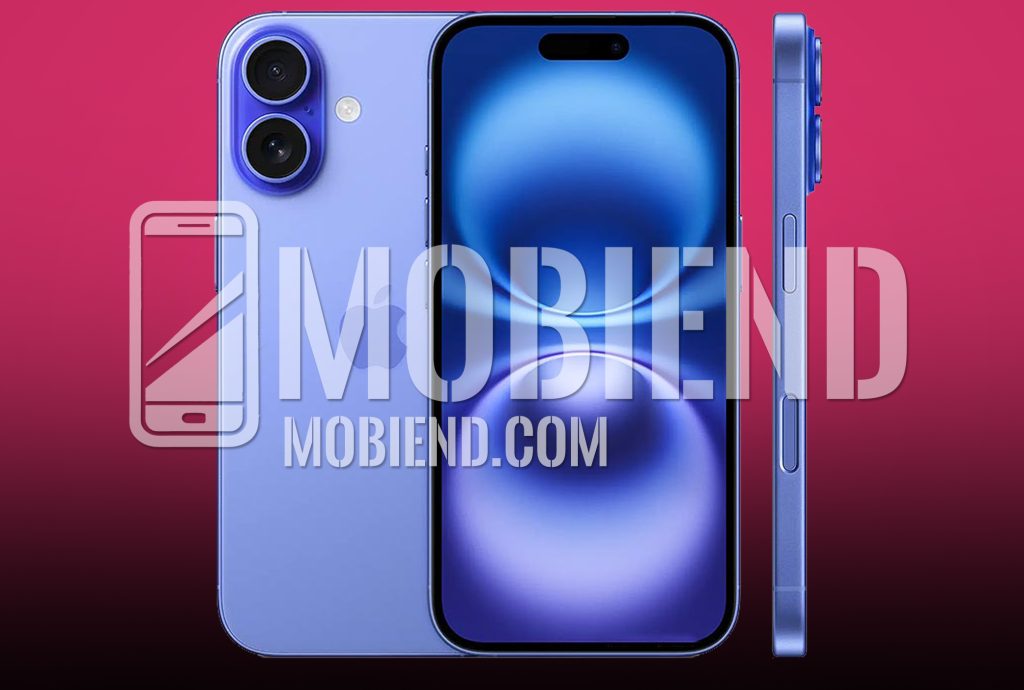The iPhone 16 blurs the line between its standard and Pro versions, becoming an attractive option for consumers looking for a premium smartphone experience without the hefty price tag of the Pro series. The iPhone 16 builds on the familiar design language of its predecessors while introducing a host of new features and improvements that enhance its overall appeal. This comprehensive review will explore various aspects of the iPhone 16, including the process of box contents, design, display, performance, camera capabilities, battery life, and more, providing a detailed analysis of its pros and cons.
What’s in the Box
The box includes the iPhone 16 itself, a braided USB-C cable, and a SIM ejector tool. Although the paperwork is included, the paper compartment has been ditched, along with the iconic Apple sticker.
Design
The iPhone 16 inherits the modern design aesthetic introduced with the iPhone 15, featuring a sleek aluminum and glass build with smooth, rounded edges. It weighs 170 grams, making it relatively light and comfortable to hold. Apple has introduced a variety of vibrant color options, including pink, turquoise green, dark blue, black, and white, adding a touch of personality to the device.
The main design change for the iPhone 16 is the repositioning of the rear camera module. We also find that the two lenses have been aligned vertically, reminiscent of the iPhone 12.
This revised design not only creates a distinct visual identity, but also accommodates Apple’s new spatial photo and video feature, which enables immersive content capture for Apple Vision Pro devices.
Apple has also added two new buttons to the iPhone 16, enhancing its functionality and user experience. The Action button, which was previously exclusive to the iPhone 15 Pro, replaces the traditional mute switch and provides a customizable shortcut for various functions, including activating the flashlight, switching focus mode, and recording voice memos.
Users can further customize the behavior of the Action button using the Shortcuts app.
The second new button, the Camera Control button, sits next to the power button and offers an innovative way to interact with the iPhone 16’s camera system. This pressure-sensitive button can quickly launch the camera, zoom in and out, and adjust various settings. A firm press takes a photo, while a press and hold starts recording video. Swiping left or right on the Camera Control button with a light pressure allows you to adjust settings like exposure, zoom, and more, providing a level of control typically found on dedicated cameras.
Display
The iPhone 16’s display remains unchanged from its predecessor, featuring a 6.1-inch Super Retina XDR display with a resolution of 2556 x 1179 pixels. The display technology is OLED, which delivers vivid colors, sharp contrasts, and deep blacks. It has a peak brightness of 2,000 nits, ensuring excellent visibility even in bright sunlight.
However, the iPhone 16’s display lacks the ProMotion and Always-On features found on the Pro models. This means the refresh rate is fixed at 60Hz, which can result in less smooth scrolling and animations compared to higher refresh rate displays. Some users may find this omission disappointing, especially given the prevalence of high refresh rate displays in competing smartphones.
The iPhone 16 retains the Dynamic Island, a pill-shaped notch at the top of the display that houses the front-facing camera and Face ID sensors. The Dynamic Island dynamically adapts to display contextual information, such as incoming calls, notifications, and music playback controls.
Performance
The iPhone 16 is powered by Apple’s new A18 processor, a significant performance upgrade over previous models. The A18 is manufactured using a 3nm manufacturing process, which improves efficiency and performance. Apple claims a 30% increase in CPU performance and a 40% increase in graphics performance compared to the A16 in the iPhone 15.
Performance tests confirm the power of the A18. In the Geekbench 6 test, the iPhone 16 achieved single-core and multi-core scores of 3,301 and 8,033, respectively. These scores outperform not only the iPhone 15 but also the iPhone 15 Pro Max. In 3DMark’s Wild Life Unlimited test, the iPhone 16 achieved an average frame rate of 98.23 fps, a 36% improvement over the iPhone 15.
These performance gains translate into a smoother user experience. Apps open quickly, multitasking apps run smoothly, and graphics-intensive games run smoothly. The A18 also includes an improved Neural Engine, which supports Apple’s AI features, including those available through Apple Intelligence.
Is the iPhone 16 Good for Gaming?
The iPhone 16’s powerful A18 processor makes it a powerful gaming machine. It can handle graphics-intensive games like “Resident Evil Village” without a significant drop in frame rate. However, the lack of a high refresh rate display may hinder the overall gaming experience, as animations and scrolling may not look as smooth as on devices with higher refresh rates. The iPhone 16 also gains support for hardware-accelerated ray tracing, further enhancing its gaming capabilities.
Camera
The iPhone 16 has a dual-camera system on the back, consisting of a 48MP main camera and a 12MP ultra-wide camera. This camera system shares similarities with the iPhone 16 Pro setup, delivering great image quality in a variety of shooting scenarios.
The main camera excels at capturing detailed and well-exposed images, even in challenging lighting conditions. Apple highlights the camera’s ability to produce 2x optical-quality zoom images using pixel-binning techniques, effectively eliminating the need for a dedicated telephoto lens.
The ultra-wide camera has been upgraded with autofocus and a wider f/2.2 aperture. This wider aperture improves its low-light performance, enabling brighter, more detailed images in darker environments.
The ultra-wide camera also gains a macro mode, allowing users to capture close-up shots with stunning detail.
Advantages and disadvantages of the camera
Advantages
High-quality images: The 48MP main camera consistently produces sharp, detailed images in a variety of lighting conditions.
Macro photography: The ultra-wide camera’s macro mode allows for stunning close-up shots with great detail.
Camera control button: This innovative addition provides enhanced control over camera settings, providing a more tactile and intuitive shooting experience.
Improved low-light performance: The ultra-wide camera’s wider aperture and autofocus capabilities improve its low-light performance, resulting in brighter, more detailed images in darker environments.
Versatile camera system: The combination of a 48MP main camera and a 12MP ultrawide camera offers a wide range of shooting options, from wide-angle landscapes to close-up macro shots.
Disadvantages
Lack of a dedicated telephoto lens: The absence of a telephoto lens limits the iPhone 16’s zoom capabilities compared to some competitors.
Low-light zoom limitations: While the main camera performs well in low light, the 2x in-sensor zoom may struggle in darker environments.
Memory
The iPhone 16 comes in three different storage capacities: 128GB, 256GB, and 512GB. These options provide ample storage space for apps, photos, videos, and other files.
Connectivity
The iPhone 16 offers a comprehensive range of connectivity options, ensuring seamless integration with different devices and networks. It supports 5G for high-speed cellular connectivity. Wi-Fi 7 provides fast and reliable wireless internet connectivity. NFC enables contactless payments and data transfer. Bluetooth 5.3 allows for connectivity with headphones, speakers, and other wireless accessories. The Thread protocol supports integration with smart home devices. The USB-C port provides fast charging and data transfer capabilities. The iPhone 16 also features satellite connectivity for emergency communications in areas without cellular coverage. Ultra-wideband technology enables precise location tracking and device interaction, and GNSS supports precise location services.
Battery
While Apple doesn’t publicly disclose the iPhone 16’s battery capacity, sources suggest it will feature a larger battery than its predecessor. Apple claims up to 22 hours of video playback, up to 18 hours of streaming video, and up to 80 hours of audio playback. Real-world usage suggests the iPhone 16 easily delivers all-day battery life, even under moderate to heavy use. The iPhone 16 supports fast wired charging via USB-C, capable of reaching 29% charge in 15 minutes and 57% charge in 30 minutes using Apple’s 30W charger. It also supports 25W MagSafe magnetic charging and Qi2 wireless charging, providing convenient and faster wireless charging options.
Conclusion
The iPhone 16 offers an attractive mix of performance, features, and affordability. Its powerful A18 processor, improved camera system with macro photography, a camera control button, and long battery life make it a strong contender in the smartphone market. While the lack of a telephoto lens and a high refresh rate display may be a drawback for some, the overall value of the iPhone 16 is undeniable. The upcoming arrival of Apple Intelligence will further enhance its appeal, promising a range of AI-powered features that will undoubtedly enhance the user experience.
iPhone 16 Price
Abroad, the 128GB version costs $800.. the 256GB version costs $900.. and the 512GB version costs $1100.
In Egypt, the 128GB version costs about 42 thousand pounds.
In Saudi Arabia, the 128GB version costs 3800 riyals.. the 256GB version costs 4300 riyals.. and the 512GB version costs 5300 riyals.
In the Emirates, the 128GB version costs 3400 dirhams.. the 256GB version costs 3800 dirhams.. and the 512GB version costs 4650 dirhams.



